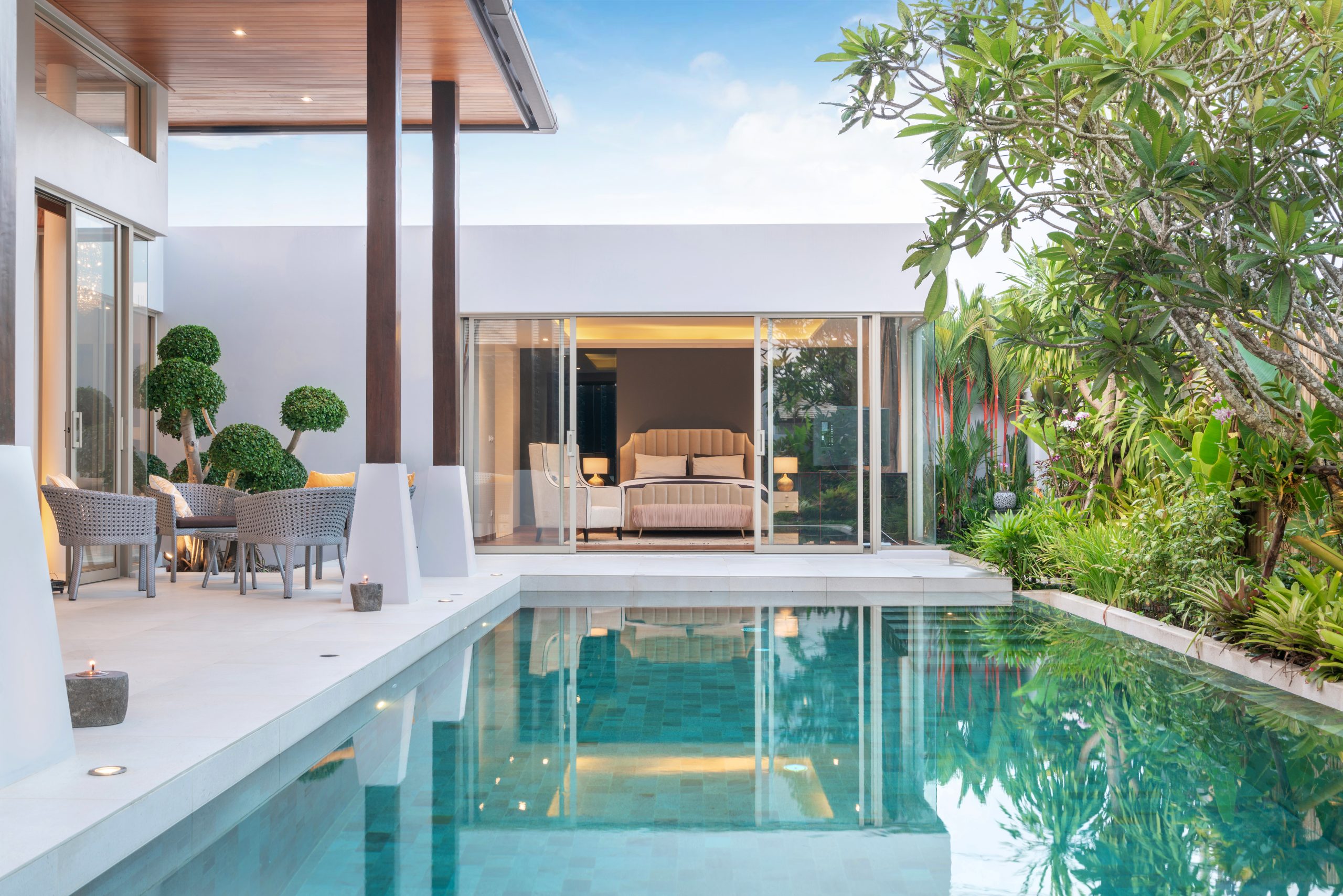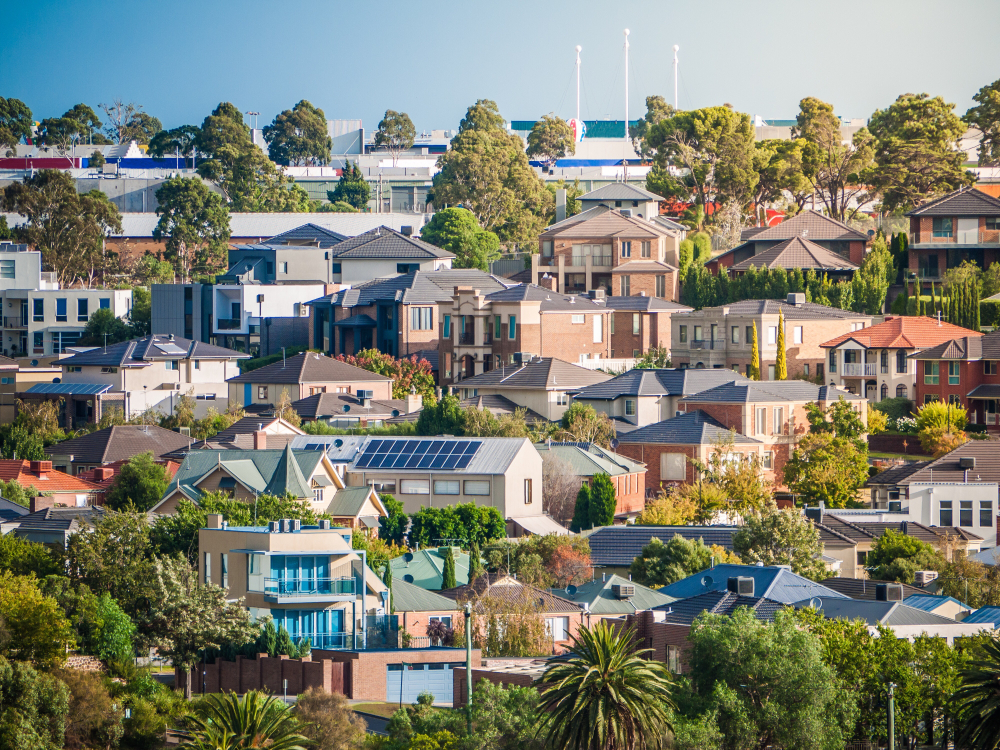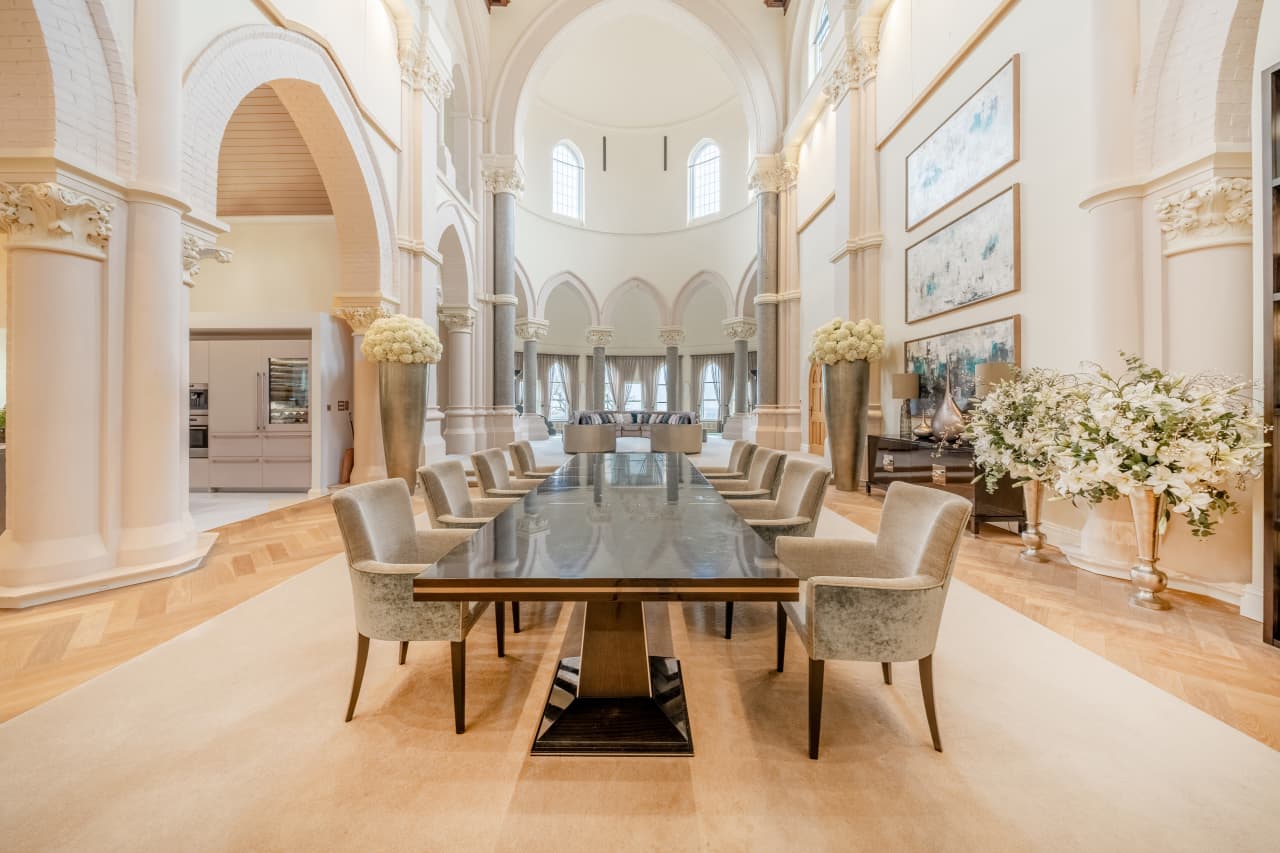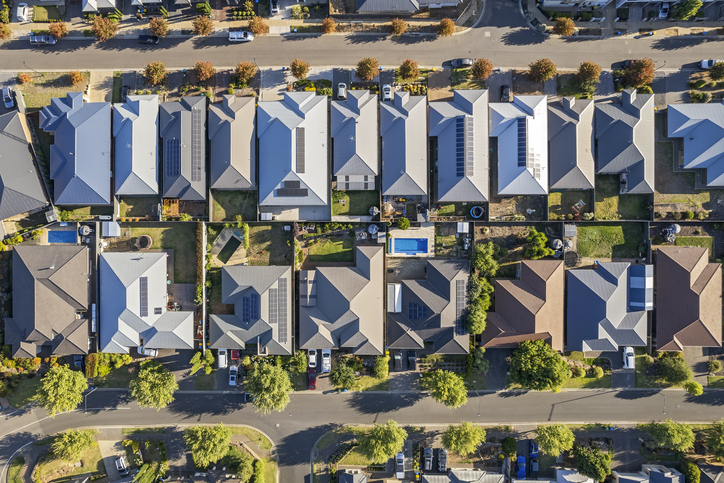Your Front Door Holds the Key To Boosting Street Appeal
First impressions matter, even in today’s red-hot real-estate market.
When sisters Char Riley and Candace Carroll renovated a Los Angeles home last winter with the intention of flipping it, they knew the exterior needed some serious TLC. To complete the home’s Spanish-inspired look, they lined the porch with clay saltillo tiles and added teal and orange tiles to the stairs, which complemented the terracotta roof and seafoam green trim. They removed a tree blocking the house, planted new grass and installed an Old World-meets-modern front door made of dark wood.
Their parents, who partnered with them on the flip, were hesitant to spend so much effort on the exterior. But the sisters, both experienced investors and Sotheby’s real-estate agents, have flipped nearly 120 homes and knew it would pay off. They were right: The home, which they bought for US$995,000, sold for $100,000 over asking price, closing in May for US$1.6 million.
The street appeal lured the buyer. “His parents happened to drive down the street one day and sent him a photo of the house,” says Mrs. Riley.
In today’s market, with low inventory and quick sales, sellers might think they can turn a big profit without having to do much. But agents say that’s not the case.
“The houses that are flying off the market are the ones that are done nicely,” says Mrs. Riley. “When you have a house where you forgot about the front yard, that sets the tone. People aren’t going to want to pay top dollar.”
According to Zillow, 51% of homes sold for above asking price in July 2021. “Half of homes are selling at or below asking,” says Amanda Pendleton, Zillow’s home trends expert. “That says you still need to do all the fixes to appeal to the most number of buyers.”
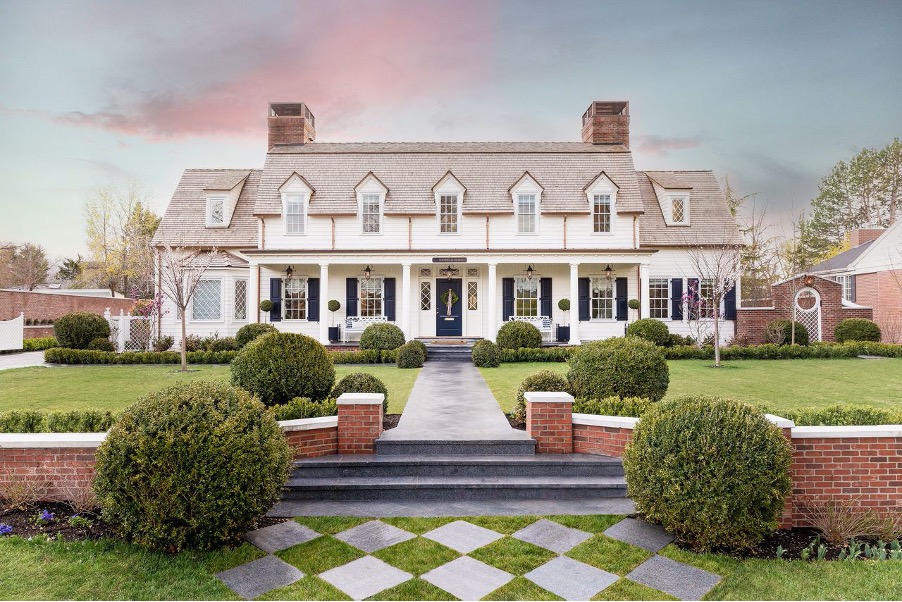
Compass broker Robin Kencel recommends sellers consider the experience from when a buyer parks their car until they reach the front door. “I’m a believer, as Barbara Corcoran says, that in the first eight seconds, you know if you’re going to buy a house.”
That was the case for one of Ms. Kencel’s clients, who is listing her Greenwich, Conn., home for US$8.995 million. When she bought it 46 years ago, she didn’t have to step inside—the front door screamed “welcome.” While preparing to list, she painted it a French blue, in the spirit of the original color.
“The front door reflects an owner’s personality,” says Cara Fox, owner and lead designer of The Fox Group, a design-build firm based in Salt Lake City. A solid wood door exudes formality and privacy, while a Dutch door, with its windowed top that opens separately—a style Mrs. Fox and Ms. Kencel are seeing more of—is more casual and inviting.
Fresh paint is an easy and inexpensive way to upgrade a front door, but choose wisely. Bright primary colours are made for Instagram, but a 2018 Zillow report found that homes with charcoal or black front doors sold for $6,271 more than expected.
Mrs. Fox, who likes deep greys like Farrow & Ball Plummet and Benjamin Moore Raccoon Fur for front doors, recommends a high gloss finish for darker neutrals. “It brings elegance,” she says.
Hardware and house numbers allow for expression. Mrs. Fox’s clients mix styles, like vintage backplates and Victorian knobs on modern doors, and colour-coordinated address plaques.
Architect Robert Hutchison says it’s also important to focus on an entrance’s progression. “We like to prolong the entry experience, rather than make it an abrupt transition,” he says. “The aim is to create something layered with a sequence of spaces.”
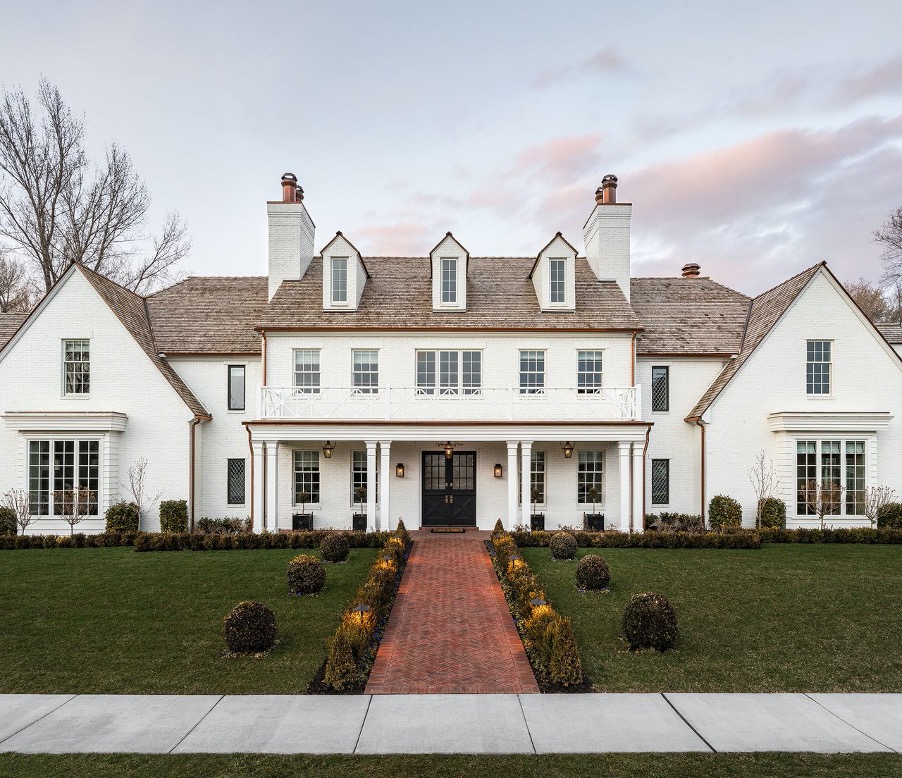
Mr. Hutchison used seating and planters along the front stairs of a Seattle home he worked on. For one Greenwater, Wash., house, he built a hidden inner courtyard beyond the entry wall. “It’s about connecting back to the city, the site and the landscape,” he says.
Blythe Yost, CEO of online landscape design company Tilly, says that foundation planting helps connect a home with its surroundings. “It’s what’s directly across the front of your house,” she says. “It knits it to the landscape. A house without foundation planting looks a little naked.”
A few perennial shrubs can help frame the door, but Ms. Yost recommends creating a layered look that’s higher in the back, with mid-size plants in the center, and a ground cover that spreads out in front. “It gives the landscape a richness that a single or double row can’t do.”
She warns against making a front garden “look perfect at every moment.” Instead, plant something—like bulbs that bloom in early spring or a flowering tree that dazzles every May—to create a landscape that’s “really awesome at one point in the season — something your neighbours will remember.”
Reprinted by permission of The Wall Street Journal, Copyright 2021 Dow Jones & Company. Inc. All Rights Reserved Worldwide. Original date of publication: September 23
 Copyright 2020, Dow Jones & Company, Inc. All Rights Reserved Worldwide. LEARN MORE
Copyright 2020, Dow Jones & Company, Inc. All Rights Reserved Worldwide. LEARN MORE
This stylish family home combines a classic palette and finishes with a flexible floorplan
Just 55 minutes from Sydney, make this your creative getaway located in the majestic Hawkesbury region.
This may be contributing to continually rising weekly rents
There has been a substantial increase in the number of Australians earning high incomes who are renting their homes instead of owning them, and this may be another element contributing to higher market demand and continually rising rents, according to new research.
The portion of households with an annual income of $140,000 per year (in 2021 dollars), went from 8 percent of the private rental market in 1996 to 24 percent in 2021, according to research by the Australian Housing and Urban Research Institute (AHURI). The AHURI study highlights that longer-term declines in the rate of home ownership in Australia are likely the cause of this trend.
The biggest challenge this creates is the flow-on effect on lower-income households because they may face stronger competition for a limited supply of rental stock, and they also have less capacity to cope with rising rents that look likely to keep going up due to the entrenched undersupply.
The 2024 ANZ CoreLogic Housing Affordability Report notes that weekly rents have been rising strongly since the pandemic and are currently re-accelerating. “Nationally, annual rent growth has lifted from a recent low of 8.1 percent year-on-year in October 2023, to 8.6 percent year-on-year in March 2024,” according to the report. “The re-acceleration was particularly evident in house rents, where annual growth bottomed out at 6.8 percent in the year to September, and rose to 8.4 percent in the year to March 2024.”
Rents are also rising in markets that have experienced recent declines. “In Hobart, rent values saw a downturn of -6 percent between March and October 2023. Since bottoming out in October, rents have now moved 5 percent higher to the end of March, and are just 1 percent off the record highs in March 2023. The Canberra rental market was the only other capital city to see a decline in rents in recent years, where rent values fell -3.8 percent between June 2022 and September 2023. Since then, Canberra rents have risen 3.5 percent, and are 1 percent from the record high.”
The Productivity Commission’s review of the National Housing and Homelessness Agreement points out that high-income earners also have more capacity to relocate to cheaper markets when rents rise, which creates more competition for lower-income households competing for homes in those same areas.
ANZ CoreLogic notes that rents in lower-cost markets have risen the most in recent years, so much so that the portion of earnings that lower-income households have to dedicate to rent has reached a record high 54.3 percent. For middle-income households, it’s 32.2 percent and for high-income households, it’s just 22.9 percent. ‘Housing stress’ has long been defined as requiring more than 30 percent of income to put a roof over your head.
While some high-income households may aspire to own their own homes, rising property values have made that a difficult and long process given the years it takes to save a deposit. ANZ CoreLogic data shows it now takes a median 10.1 years in the capital cities and 9.9 years in regional areas to save a 20 percent deposit to buy a property.
It also takes 48.3 percent of income in the cities and 47.1 percent in the regions to cover mortgage repayments at today’s home loan interest rates, which is far greater than the portion of income required to service rents at a median 30.4 percent in cities and 33.3 percent in the regions.
Just 55 minutes from Sydney, make this your creative getaway located in the majestic Hawkesbury region.
Consumers are going to gravitate toward applications powered by the buzzy new technology, analyst Michael Wolf predicts
















